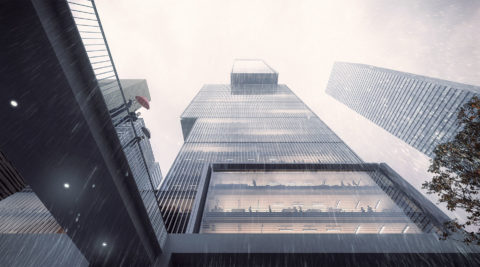
Zhangjiang Science City
Zhangjiang Science City represents a conscious shift in the planning and design of large-scale urban blocks in Shanghai toward a human scaled design that integrates a wide range of programs. Responding to the master plan mandate, the project creates an open campus with a focus on providing a balance of live, work, and play spaces.
Architecture is fundamentally the art of spaces. For the core area of Zhangjiang Science City in Shanghai, we aim to deliver spaces for science, spaces for art, and spaces for people. These memorable spaces are at the crux of what makes a city iconic.
Responding to the surrounding natural assets, such as the planned Central Park at the center of the site, Xiao Zhangjiabang River to the east, and the wetland park to the south, the design effortlessly organizes the five towers into an open and integrated network of urban gardens. The major street edges are all thoughtfully lined with public programs such as restaurants, cafes, and city services that make walking along these streets a pleasure.
Taking advantage of the adjacent green and water resources, the design employs a consistent language that marries the architecture and landscape. A series of gardens at the ground plane and atop roofs connect people to nature while elevating the wellness of all.
Central to the Zhangjiang Science City’s identity, the design celebrates the science of architecture by exposing the structural inner workings of a skyscraper and by expressing the various programs through a series of sheared volumes.
Acknowledging that scientific research is becoming more and more collaborative, thereby requiring team research spaces rather than individual research zones, the three commercial towers integrate open spaces that will foster scientific collaboration. Specifically, the design is composed of a series of atriums and the remaining spaces are designed as an open floor plate.
The expansive open atria are enclosed with a curtain wall that utilizes LED embedded scrims. During the daytime, these facades are translucent to allow for access to daylight and provide views in and out of the space. By night, the scrims turn into urban television screens to showcase scientific milestones.
Details
- Location
- Shanghai, China
- Size
- 2,131,255 GSF / 198,000 GSM
- Program
- R&D Office, Laboratories, Residential, Retail
Team
- Ennead Design Team
- Peter Schubert, Kevin McClurkan, Grace Chen, Jazzy Li, Judy Glina, Neil Yuan, Junxin Chen, Anders Evenson, Oliver Li, Chao Wei, Charles Wong, Jackie Zhou




















